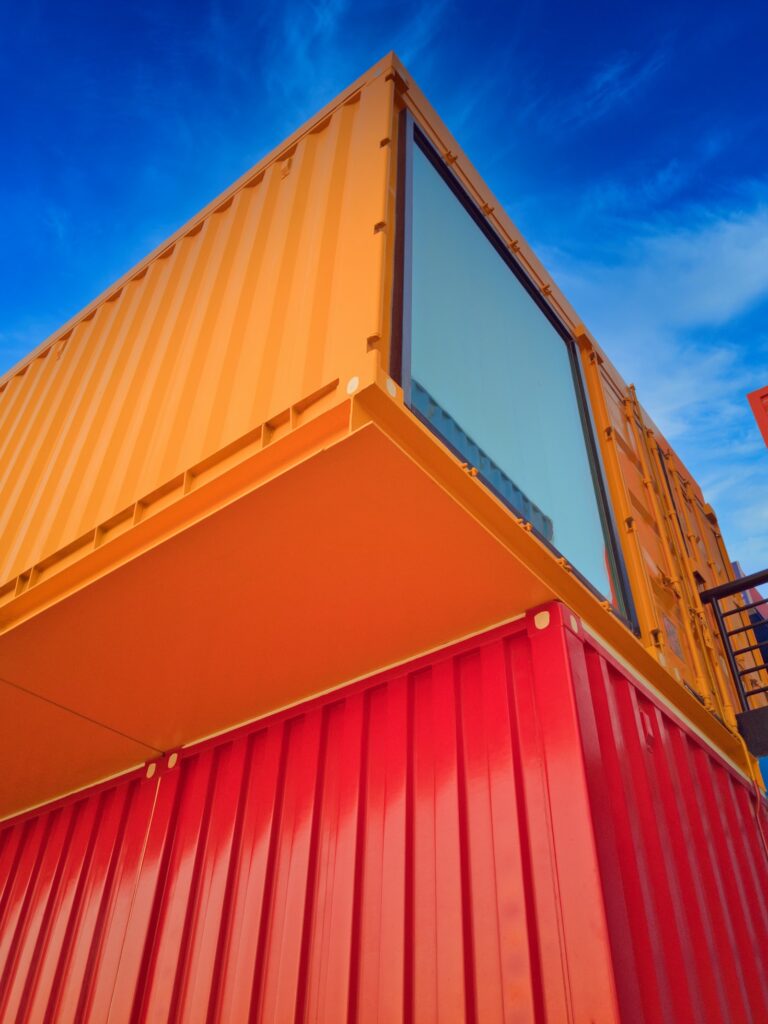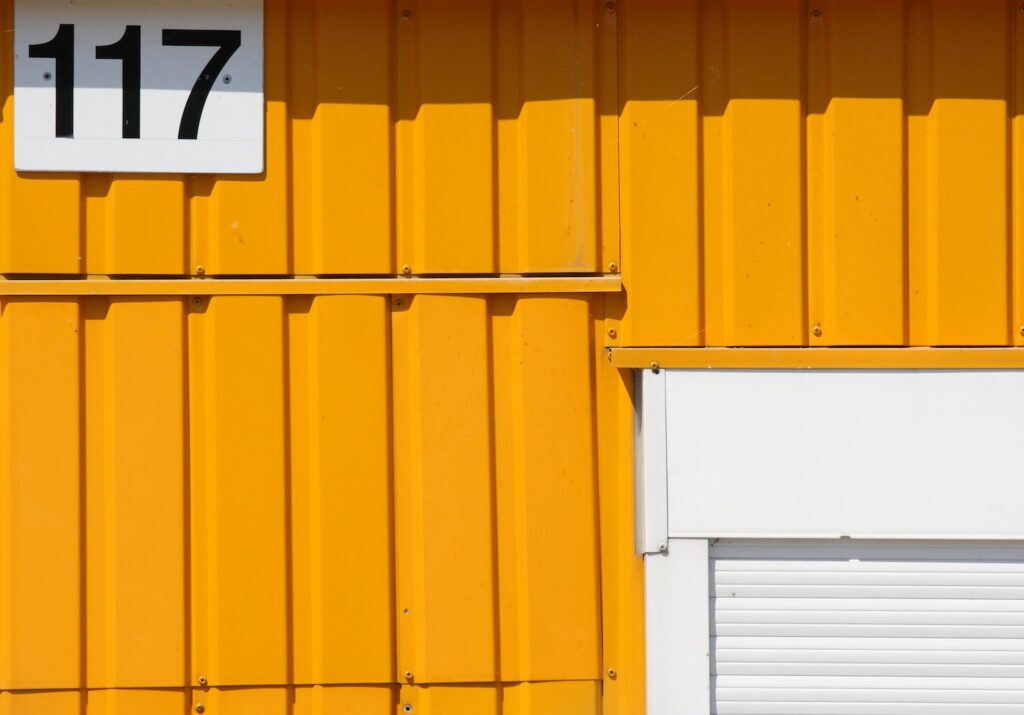Are you looking to learn more about standard shipping containers? If so, you’ve come to the right place. In this article, we will discuss the ISO standards, components, and classifications that make up these containers.
Understanding the various aspects of shipping containers will help you make informed decisions when selecting the right one for your needs.
We will start with ISO classifications. Next, we’ll look at standard container components and pieces. Shipping containers are composed of a variety of parts, such as doors, floors, walls, roofs, and understructure.
Each of these components plays an important role in the safety and security of goods during transportation.
Finally, we’ll discuss the various container classification systems. Container companies use a range of methods to categorize containers, such as size, type, and purpose. This helps them quickly identify the right type of container for specific shipments.
Understanding these ISO standards, components, and classifications will give you comprehensive knowledge of how standard shipping containers are designed and used in the logistics industry.
Whether you’re involved in international trade or domestic transportation, having a thorough knowledge of these essential tools in global commerce can save you time and money.
Key Takeaways
- Understanding the International Standards Organization (ISO) codes, components, and classifications of shipping containers is critical to fully leverage their potential.
- The right information can make your container home planning process much more efficient and successful.
- The components of a standard shipping container include the container itself, as well as the doors, hinges, and locking mechanism.
- When it comes to classifications, the most common types of shipping containers are dry, open-top, and refrigerated. Each of these container types has its own unique purpose and benefits.

What Is ISO?
ISO stands for the International Organization for Standardization. It is an independent, non-governmental international organization that develops and publishes standards. Founded on February 23, 1947, the organization promotes worldwide proprietary, industrial, and commercial standards.
ISO standards for shipping containers refer to the standardized guidelines developed by the International Organization for Standardization (ISO) that dictate the design, dimensions, structural integrity, and performance requirements of shipping containers.
Shipping Container ISO Standards
The International Organization for Standardization (ISO) sets the official standards for containers, ensuring compatibility and safety when transporting goods.
The ISO 668:2013 standard, for example, specifies the base dimensions of shipping containers, which are typically either 20 or 40 feet in length. Other dimensions, such as width and height, are also standardized to ensure that containers can be consistently stacked, lifted, and transported globally.
Another key ISO standard related to containers is the ISO 6346, which establishes the coding, identification, and marking for shipping containers. This ensures each container has a unique identifier, allowing for tracking and data management throughout the container’s life cycle.
The ISO 1496 series defines the structural integrity and performance requirements for the different types of containers, considering they need to withstand harsh conditions during transit.
Having knowledge of the different standard shipping containers can help individuals when choosing the right container type for their needs.
By following ISO standards, goods are securely packaged and meet international regulations, making the shipping process smoother and more efficient.
Adhering to these standards can save time and money, as well as provide peace of mind, knowing that goods are safely transported.

Standard Shipping Container Classification
Containers are a key part of intermodal shipping, transporting goods across the globe. To keep the process consistent and efficient, the International Organization for Standardization (ISO) created ISO 6346, a standard for container classification.
Each container is identified by a 4-digit alphanumeric code. The first two digits signify the container’s length and width/height.
The last two digits indicate its features or characteristics. This standardization makes it easy to categorize and recognize different types of containers, including cargo containers and high cube containers.
Examples of ISO
ISO codes refer to standardized descriptions for containers developed by the International Standards Organization. Here are some examples of ISO codes used for containers:
1. 22G1 – General purpose container, 20-foot long
2. 42G1 – General purpose container, 40-foot long
3. 45G1 – High cube general purpose container, 40-foot long
4. 22T6 – Open top container, 20-foot long
5. 45P3 – High cube pallet-wide container, 40-foot long
6. 22U1 – Open top container, hard top, 20-foot long
7. 22R1 – Refrigerated container (integral unit), 20-foot long
8. 42P3 – Pallet-wide, high cube, dry, 40-foot long
9. 22V1 – Ventilated container, 20-foot long
10. L5G1- Insulated container, 20-foot long
To identify and designate different types of containers, here is a simple breakdown on how to understand these codes:
1. Length: The first two numbers in the ISO Code specify the length of the container in feet. Common numbers include 20, 40, and 45, which represent the typical lengths of shipping containers.
2. Type: The third character letter represents the container’s category. For example, ‘G’ for general purpose; ‘R’ for refrigerated; ‘T’ for open-top; ‘U’ for Open Top Hard; ‘V’ for ventilated; ‘H’ for thermal.
3. Height and/or Series: The fourth character in the ISO code normally indicates the height and/or series of the container. For example, ‘0’ for ordinary height for the given series, ‘2’ indicates it’s designed for stacking, and ‘5’ indicates that the container is 9 feet 6 inches tall (high cube).
4. Check Digit: Lastly, a check digit is also assigned as part of the container identification. This is used to verify the accuracy of the identification.
5. Operational Markings: These are painted onto the container and provide handling information, such as maximum stacking capability or maximum payload.
Container Components and Pieces
When it comes to container components and pieces, there are several important factors to consider. The corners of the container are a key element as they provide structural integrity and allow for stacking.
These components and pieces are vital for the secure and safe transportation of goods. It’s important to ensure that all pieces are properly fitted and installed to maximize the functionality of the container.
Corners
Shipping container corners are essential to the overall structure of the container. They provide a secure connection point between the sides, allowing for modularity and versatility.
The International Organization for Standardization (ISO) sets the standard dimensions for shipping containers, including the corner design specifications.
Each corner is made from solid steel, designed to be durable and long-lasting. They feature elongated holes that allow for twist-lock fittings to be attached.
Generally, corners measure 8 inches by 5 inches by 5 inches, although this may vary depending on the size of the container.
With these sturdy and reliable corners, containers become building blocks for a variety of applications. They can be used for transportation, storage, and even architecture.
Corner Castings
Container corner castings are essential components of standard shipping containers. They are designed to meet ISO specifications and withstand the rigors of international transportation.
These castings are made from sturdy cast steel, and the holes on them vary in size and shape depending on whether the corner is located at the top or bottom of the container.
The dimensions of the holes range from 2-3 inches in diameter, and they come in an oblong shape. For detailed measurements, one can refer to ISO 1161 or contact a reseller or manufacturer for shop drawings.
These corner castings play an important role in ensuring the structural integrity and stability of shipping containers. Their precise design and functionality are essential for the successful transportation of goods worldwide.

Corner Spacing
Shipping container corner spacing refers to the distance between the corner castings or corner fittings, which are absolutely essential for lifting, handling, stacking, and securing containers.
For most ISO containers, the distance between the center of the holes widthwise (P) is 2259mm (7ft 4.94in). The lengthwise distance (S) for 40ft and 20ft containers is 11985mm (39ft 3.85in) and 5853mm (19ft 2.43in), respectively. These measurements facilitate efficient stacking and handling of the containers.
Larger containers, such as pallet wide and 48ft/53ft models, maintain the same P measurement but have slightly inwardly positioned corner holes.
Moreover, longer intermodal containers exceeding 40ft have additional intermediate corners spaced at 40ft intervals. These intermediate corners are positioned inwards to properly interface with regular intermodal containers.
Sheet Metal Skin
Shipping containers are incredibly strong and durable. To understand why, take a moment to examine their sheet metal skin.
The metal panels on the sides and top of standard shipping containers are usually made of steel. Refrigerated containers may have plain metal exteriors for temperature control, but most contain corrugated sheet metal panels for extra strength.
It’s important to note that the corrugations on each side of the container have different dimensions. The long sides, the short side (including the doors), and the top all have their own unique corrugation dimensions.
This standardized design allows containers to be compatible worldwide for cargo transportation.
Container Side Corrugation
Container-side corrugations are essential for the safe and efficient shipment of goods worldwide. The corrugated steel used in their construction provides structural integrity and allows the container to withstand the rigors of transportation and stacking.
These vertical corrugations increase the overall thickness of the container’s sides. This is important to consider, as it affects the interior width of the container.
Standard shipping container dimensions, known as ISO containers or intermodal shipping containers, must adhere to these measurements. This ensures compatibility and makes loading and unloading simpler.
From regular containers to specialized ones such as refrigerated units or hazardous materials transport, the strength of steel container sides with proper corrugation is essential. Without it, the container would not be able to withstand the forces of transportation and stacking without risk of damage.
Container End Corrugation
The container end corrugation is a feature that sets the standard shipping container apart from every other container. It is an essential part of the ISO container, which is used for freight and intermodal shipping around the world.
At first glance, it may look like any other corrugated steel but upon closer inspection, the distinct pattern of vertical ridges on one side of the container can be seen.
These ridges, along with the solid wall on the other side, are designed to ensure the container’s durability and stability when in transit.
While the container end corrugation may not be the most exciting feature, it plays an important role in the transportation industry. It helps to ensure that containers are classified and used correctly for various transportation needs.
Container Door Corrugation
The corrugation on a container door refers to the ridges and grooves that are pressed onto the container’s steel sheets to increase its rigidity and strength without adding much weight.
Corrugation makes the container door more durable and resistant to the demanding conditions of seabound, road, or rail travel.
The visually distinctive wave pattern of corrugation not only contributes to the structural strength of the container, but it also helps repel elements like wind and water and helps withstand any external pressure or blows.
Most container doors have two to three vertical corrugations, and the corrugated steel sheet is typically fastened to the top and bottom rail and a vertical door profile on the lock side. The corrugated design also allows for easy maintenance and repair in case of damage.
Container Roof Corrugation
The roof of a shipping container is built with a unique shape and slight camber, making it ideal for efficient drainage of rainwater or other liquids. Its corrugations are designed to direct water to the sides, preventing pooling and potential damage.
The corrugations also serve multiple structural purposes. They add strength and rigidity, allowing the container to hold heavy loads during transportation or when stacked.
The ridges help to evenly distribute weight across the surface, keeping it stable and preventing deformation.
Finally, the circular pattern near the edges provides structural integrity and makes it easier to install and maintain additional components such as roof racks and solar panels.
Floor
Container home flooring usually comprises 19 or 21 layers of dense, tropical hardwoods such as Apitong. This 1-1/8 inch (28mm) thick ply is resilient and robust, suitable for sustaining the demands of a residential environment.
Understanding the different types of container flooring is vital to choosing the appropriate container for specific housing needs. For instance, refrigerated containers, often repurposed into cool or cold climates homes, have insulated flooring, which contributes to the overall thermal efficiency of the dwelling.
High cube containers, with their increased height, are ideal for creating homes with high ceilings, and their sturdy flooring supports any additional interior fitting.
Open top containers with removable roofs might have unique flooring that facilitates easy modifications, like the addition of a mezzanine floor or a loft conversion.
Reefer containers possess flooring designed to withstand moisture and maintain insulation, making them suitable for building homes in humid or flood-prone areas.
Choosing the right container based on your flooring preferences can play a significant role in the safety, comfort, and longevity of your container home. Therefore, considering this aspect is crucial during the planning phase of your container home project.
Why Is Understanding Components, Parts, And ISO Important?
Understanding the various components, parts, and International Organization for Standardization (ISO) guidelines related to shipping containers is crucial for anyone interested in the burgeoning field of container homes.
ISO sets the global standards for the design and dimensions of shipping containers. Knowing these standards can help individuals ensure that their container homes are structurally sound and compatible with international guidelines.
Having knowledge of the various components and parts of a shipping container allows individuals to fully grasp the potential and versatility of these structures when transforming them into homes.
For instance, the unique corrugation of the walls contributes to the container’s strength and resilience, making it robust housing material.
The specific layout of the corner fittings or blocks allows for easy stacking and positioning, providing opportunities for creative architectural designs.
ISO classifications are also vital, as they provide assurance that the containers used for housing meet certain quality and safety standards.
These classifications ensure that the containers are not only suitable for housing but that they are also safe for individuals and meet environmental sustainability guidelines.
In conclusion, understanding the components, parts, and ISO standards of shipping containers is vital in the realm of container homes.
Such knowledge provides insights into designing and constructing safe, innovative, and sustainable homes.

